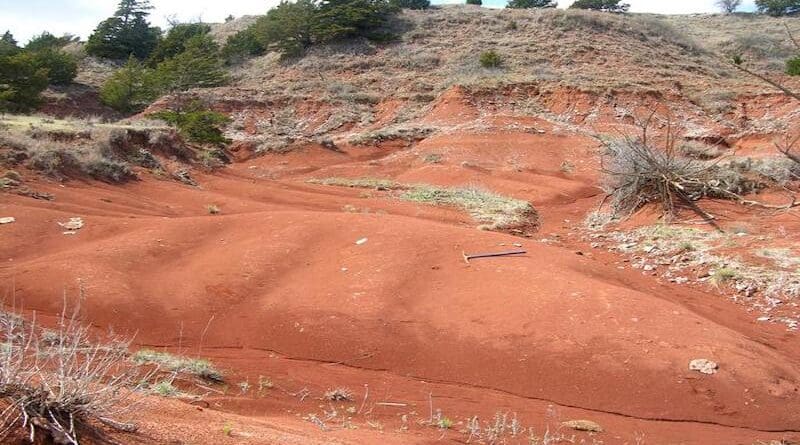Deep Dust Project Works To Unravel Earth’s Climate Past In Oklahoma’s Anadarko Basin
A team of researchers at the University of Oklahoma will explore the Permian sediment of Oklahoma’s Anadarko Basin, which contains dust deposits from Earth’s deep-time past. The Anadarko Basin includes the most complete continental record of low-latitude Pangea, enabling researchers to better understand the collapse of one of Earth’s greatest glaciations, a period of colder temperatures leading up to the largest extinction in Earth’s history.
The principal investigator of the research venture, known as the Deep Dust project, is Lynn Soreghan, Ph.D., professor in the School of Geosciences, Mewbourne College of Earth and Energy. The Deep Dust project was recently awarded a $2.3 million grant from the National Science Foundation and includes researchers from OU’s School of Geosciences, the Sam Noble Oklahoma Museum of Natural History, and the Oklahoma Geological Survey, including several early-career scientists. Several other universities are collaborators on the NSF project. Researchers include principal investigator Lynn Soreghan, Xiaolei Liu, Gilby Jepson, Sarah George, Rick Lupia, Jaqueline Lungmus and Molly Yunker.
Oklahoma’s Anadarko Basin continued to collect sediment through the entire Paleozoic era, and the sediment that accumulated in the basin in Permian time contains a record of land environments, giving researchers a link to Earth’s continental past.
“I’m very excited because we are poised to access a globally unique record of continental conditions during an interval of remarkable upheaval in Earth’s climatic and biospheric systems,” Soreghan said. “Much of this sediment was dominated by dust that fell out of the atmosphere, which forms a very high-resolution archive of continental conditions.”
The outcome of the project, obtaining a complete sediment core, will provide a record of Earth’s history unlike any other obtained thus far, allowing scientists to solve puzzles about Earth’s systems, including how tectonic and climatic shifts influence biological systems.
“The Earth experiences tectonic, climatic and biological system shifts all the time, but because these events happen slowly over time, it can be hard to understand how they influence one another during our relatively short lifespans,” Molly Yunker, program administrator for the Oklahoma Geological Survey, said. “Hopefully, by peering back through time and looking at sediment cores from roughly 300-250 million years ago, we can better understand how the Earth may change in the future.”
The project began with workshops attended by scientists from 14 countries, one in Oklahoma in 2019 and a second in France in 2020. During the workshops, international researchers from various disciplines shared ideas and created a plan and goals for the project. Together, the group secured a grant for $1.5 million from the International Continental Drilling Program.
“The aim is to interrogate this interval of enormous environmental change and the resultant effects on Earth’s biosphere,” Soreghan said. “These sorts of efforts often take up to a decade to bring to fruition. I first began working on assembling the seismic data to start this process in 2016.”
The project will also include community outreach to share scientific ideas with the public, educators, museums and students.
“There are numerous outreach plans, and I’m excited to collaborate with many different types of scientists and researchers, both here and abroad, to carry out these plans,” Yunker said. “It’s a phenomenal opportunity to learn with and from others and to engage in a wide range of outreach activities.”

